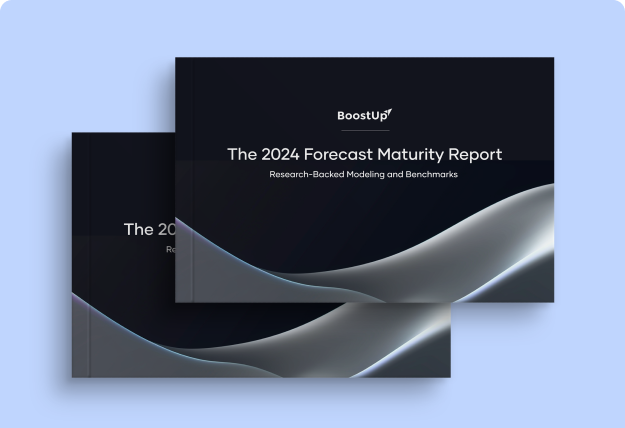The Revenue Blog /
CEO Insights: The New Economic Cycle is Born from the Downturn
CEO Insights: The New Economic Cycle is Born from the Downturn

Topics covered in this article
This is not yet another downturn tailing the end of a market cycle where assets get repriced, interest rates revert, and a new economic cycle is born. This is a mother of all downturns with several exacerbating shifts:
Great resignation and low labor participation.
Remote work (which is both good and presents challenges)
The pandemic continues and is wreaking havoc with multiple infections and long covid.
New world order with China’s GDP growth slowing down, a long-drawn war, and a general trend toward de-globalization.
Buckle up, folks. The new world order is beginning to take shape. We need to be prepared as this could be a long slow winter; several quarters of negative or slow growth as the world recuperates from wars, pandemics, and our new relationship to work.
Accurate forecasting & planning has always been important but now more so than ever as the focus shifts from pure revenue, growth, and net income/EBITDA metrics to Path-To-Profitability metrics like free cash flow margins, "rule of 40," and such. Revenue teams will be forced to do more with less against these 3 top-down forces
- Layoffs will result in the loss of ramped talent & institutional knowledge
- Hiring freezes will result in orphaned programs & abandoned projects
- Remote work is less visible work, not as collaborative & efficient
So what can we do? The only way to counter these 3 forces of layoffs, hiring freezes, and untransparent remote work – is to increase productivity per revenue worker.
- Fewer reps - have to chase the same # of opportunities
- Fewer managers - have to manage more reps
- Fewer Ops - with increased demand for reporting and data needs
Contrary to a hyper-focus on cutting and curtailing costs, successful leaders will actually find ways to invest in enablement, tools, and processes to raise productivity from their revenue workers.
Technology and process - are the only 2 levers - that give leaders the leverage they need in constrained markets.
Productivity starts with Visibility, which leads to predictability, which leads to process creation, and behavior changes, and ultimately boosts productivity.
Visibility → Predictability → Productivity
The precursor to increased productivity is hyper-visibility into every aspect of the revenue supply chain:
CQ Forecasting Accuracy → Q+1, Q+2 Pipe coverage and quality → Rep activity visibility → Pipe creation → marketing campaign effectiveness.
Predictability follows visibility. If you can predict, you can manage. And accurately forecasting for CQ, CY is what drives all strategic and resource planning. Get it right, and you are great. Get it wrong, and there is a whole host of debt acquired.
Forecasting inaccuracies are of two kinds - Over-forecasting and Under-forecasting - and they result in different kinds of problems. Forecasting Accuracy and S&M investment are inversely correlated. Let’s see how.
Say your target was $50m, and you booked $50 million for the CQ/Q+1/Q+2, but you forecasted $55 million on day 1 of the quarter. That’s 10% over-forecasting. That’s the “happy ear zone of forecasting,” which lowers the bar and the accountability and force function to focus on the right areas of the business. More specifically -
- You would underinvest in the pipeline generation given the 10% over-forecast and the complacency that comes with it
- You would keep your underperforming reps on for longer
- You would delay investment in enablement
Basically, over-forecasting results in under-investment in key areas.
Now let’s talk about under-forecasting. Say your target was $50m, and you booked $50 million for the CQ/Q+1/Q+2, but you forecasted $45 million on day 1 of the quarter. That’s 10% under-forecasting. That’s the “paranoid zone of forecasting,” leading to premature over-investment.
Because you are under-forecasting, you are now either over-investing and doing unnatural things such as –
- Giving discounts and setting the precedence of discounted deals. This has far-reaching implications for your sales culture
- You are likely now investing in hiring reps to hit your numbers in the coming quarters.
- You expand ICP definition and start doing spray-and-pray marketing campaigns and will now deal with a glut of bad pipeline.
Given the hiring freeze, heightened scrutiny on-ramp and rep performance, and tight marketing budgets → it is incredibly critical to get within the Goldilocks zone of forecasting.
What is Goldilock's zone of forecasting?
That’s when you are within 1-2% of your forecast. This allows you to make:
- Right headcount planning
- Right marketing budgeting and allocations
- Hire high-quality talent
Goldilocks' zone of forecasting doesn’t happen on its own. It takes rigor, process, tools, and data to get it right. You need:
- You need to go deal-by-deal forecasting. Top-down gut calls aren’t enough.
- You must triangulate from calls, weighted averages, AI projections, and deal-by-deal roll-ups.
- You need to get overlays such as reps, SCs, and account managers to forecast and compare their forecasts with rep forecasts.
Read our advanced forecasting guide and list to our recent "Art and Science of Sales Forecasting" masterclass to learn more about getting to the Goldilocks zone of forecasting.






-Photoroom.png)